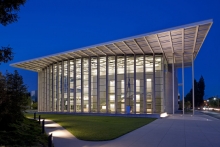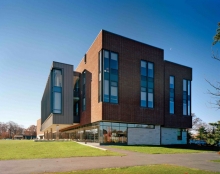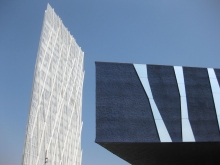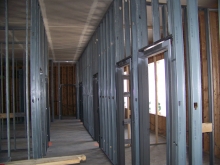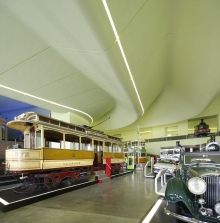Valley Performing Arts Center by HGA Architects and Engineers
A world-class performing arts center harmonizes between town and gown, technology and energy-efficiency.
Located in Southern California’s San Fernando Valley, California State University’s Northridge campus (CSUN) is home to a new $125 million, 166,000-square-foot performing arts center. The Valley Performing Arts Center, certified LEED Gold, was designed by Minneapolis-based HGA Architects and Engineers, specialists in this facility type. The architects faced several challenges in creating a world-class center that incorporates advanced technologies without compromising energy efficiency and also redefines the campus edge while embracing the community.
